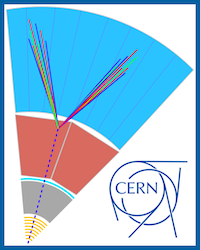Simplified t-channel dark matter models with coloured mediators are rich in phenomenology and can be mapped to a variety of UV complete scenarios.
In this talk, I will discuss the degenerate mass region of mediator and dark matter states, discuss the rich phenomenology including Sommerfeld enhancement and bound state information in opening new parameter space. I discuss the collider...
We consider charged lepton flavor violation (CLFV) via a light and weakly interacting boson and discuss the detectability by future lepton beam dump experiments. We focus on three types of CLFV interactions, i.e., the scalar-, pseudoscalar-, and vector-type interactions, and calculate the sensitivities of lepton beam dumps to each CLFV interaction. We show that a wide region of the parameter...
The observed small neutrino masses can be explained by type I seesaw models that predict the existence of heavy neutrinos. In a large part of the collider-accessible parameter space, these heavy neutral leptons would be long-lived and can be searched for with displaced vertex signatures. Additionally, collider-observable heavy neutrinos of type I seesaw models must form almost mass-degenerate...
In this talk, we explore long-lived particle (LLP) searches using non-pointing photons at the LHC as a probe for transition magnetic dipole moments of sterile neutrinos. We consider two heavy sterile neutrinos with masses ranging from a few GeV to several hundreds of GeV, which interact with the Standard Model (SM) through sterile-to-sterile and active-to-sterile dipole moments. In certain...
New long-lived particles (LLPs) are a class of particles that are generically predicted in various theoretical extensions of the Standard Model (SM) such as those with Dark Matter candidates. The LHC has a detailed programme to search for LLPs produced at energies at the electroweak scale and above, which has mostly been focused on ‘prompt’ decays within the LHC experiments. In contrast, the...
I will present a study on axion-like particles (ALPs) with quark-flavor-violating couplings at the LHC. The ALPs can originate from decays of top quarks which are pair produced, and then decay to jets. If these couplings to the quarks are tiny and the ALPs have masses of the order of 10 GeV, they are long-lived, leading to signatures of displaced vertex plus multiple jets. We recast a recent...
Future e$^+$e$^-$ colliders, with their clean environment and triggerless operation, offer a unique opportunity to search for long-lived particles (LLPs). Considered in this contribution are prospects for LLP searches with the International Large Detector (ILD) providing almost continuous tracking in a Time Projection Chamber (TPC) as the core of its tracking systems. The ILD has been...
We study the capability of the off-axis near detector ND280 of the T2K experiment to search for LLPs, and show constraints on the dark photon model and the B-L model. It is found that the ten-year operation of T2K with the ND280 detector excludes the unexplored parameter region of the models. We also show that a broader parameter region can be searched by the ND280 in the future T2K operation.
The upcoming European Spallation Source (ESS) will soon provide the most intense spallation neutron source in the world and represents a unique opportunity to probe unexplored parameter space for long-lived particles.
In this context, we propose the Search for Hidden Neutrinos at the ESS (SHiNESS) experiment, highlighting its unique opportunities to search for the existence of sterile...
